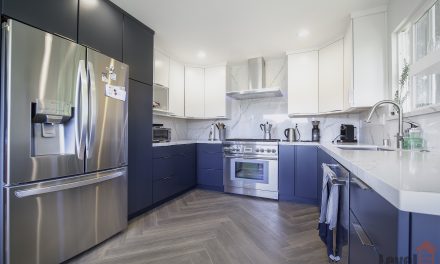Many homeowners are looking to make changes in their homes to improve energy efficiency and lower their carbon footprint. If you’re one of those looking to make improvements, focus on upgrades that will save you the most money on energy costs and will add the most value to your house.
Simple upgrades, such as sealing your windows or cleaning your air ducts, are the best initial courses of action as they can significantly reduce your energy bills. However, they won’t add much value to your home.
While you may be shying away from larger upgrades due to their high price tags, remember that they can add significant value to your home.
Either way, here are some energy efficiency improvements to make in your home.
- Opt for Energy-Efficient Appliances
Many old homes can benefit from new appliances, including a new air conditioner, boiler, and furnace. HVAC systems that are over 15 to 20 years old are highly inefficient by today’s standards. All the recent developments in the air conditioning and heating industry have made more than a decade old HVAC systems candidates for replacement. Combining the installation of a new HVAC unit with other improvements, such as window sealing and improved ductwork, will result in considerable energy savings.
- Regularly Maintain or Replace Your Furnace or AC Filter
Cleaning the furnace or AC filter is something that is overlooked quite often. However, cleaning your air ducts, AC filter, and furnace or replacing them just in time can reduce the pressure on appliances, causing them to consume less energy. While many specialists recommend clean or replacing your AC filter every month, others suggest doing it four times a year.
- Install a Smart Thermostat
A smart thermostat helps enhance the heating and cooling efficiency by allowing homeowners to adjust and set their climate control systems to achieve the optimal temperature at a minimal cost. A smart thermostat also makes it possible to turn down the temperature when no one is home. In simple words, once you program the thermostat, it will automatically adjust the temperature without any manual adjustments.
- Upgrade the Water System
There are a few ways to save water and reduce costs associated with it. Low-flow fixtures, including faucets, toilets, and showerheads, use minimum water required to get the job done. Also, many of these models are adjustable, allowing the user to set their preference manually. Moreover, not only are low-flow fixtures cheap to install, but they’ll also pay for themselves in a few months with reduced water bills.
- Improve the Lighting
Reduce your electricity bill by switching to LED or CFL bulbs. Installing new light fixtures can also bring down the lighting costs, which make up almost one-third of a home’s electricity bill. Another great energy-efficient upgrade is to enhance the natural light in your home. Besides adding value, skylights and larger windows allow more sunlight in the house, reducing reliance on electricity.
The Bottom Line
Most of the energy improvements mentioned above will lead to energy savings and add value to your home. Homeowners uncertain about any energy changes they are missing out on must contact energy providers who will inspect their property and provide recommendations. That being said, even if some energy efficiency improvements are expensive at first, be sure that they will save you a lot in the long run.






Recent Comments